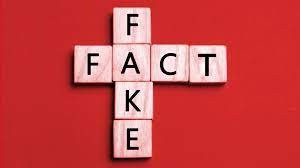Misinformation is considered one of the biggest problems of the modern age. It ties in closely with a lot of different and inherent biases that almost everyone suffers from, and one of the most dangerous is the confirmation bias. This makes it easier for certain movements and types of thought to crop up, such as right-wing fascism, where certain media outlets might try and publish stories that they know will be popular among their fans, even if it means having to resort to using misinformation.
Although misinformation is a serious problem, there are some tools and other methods that a person can use to quickly find misinformation within an article.
1. Sweeping Statements
One of the easiest ways to fool a person is by making a sweeping statement that seems like it might be based on truth, but lacks any sort of citation material or is general enough that it must be true. The easiest way to spot one of these is by the generality of the statement. The piece might say that 45% of people like to eat broccoli, as an example – and it’s a statement that most people reading would readily accept. It’s often up to how it’s written rather than it relying on fact.
2. Specific Topics
Certain topics are much more prone to fake information than others. Politics is one such topic, where everyone has a different opinion and viewpoint, and some are willing to outright lie or omit the whole truth to the audience. Any topic that has a lot of emotional investment involved should always be heavily scrutinised, and a reader should take the time to double check any of the statements that are made, especially when they mention any “facts”.
3. Always Be Sceptical
It’s much easier to not apply scepticism to everything that we read, see, or hear. We want to be able to trust the writer, and even more so if it’s a writer that has traditionally been quite factual with their writings in the past. But scepticism is an important part of avoiding any kind of misinformation, so it’s a good idea to exercise scepticism toward any article that is being read, regardless of the subject matter. Even well-known and prominent scientists are known to sometimes make uninformed statements.
4. Utilise Fact-Checking Sources
There are a lot of ways of checking that a fact is true or not. And asking a friend – unless they’re an expert in a field – is not always going to offer reliable results. Instead, look for resources that are specifically centred around checking certain facts and decrying any misinformation, such as the common myth that playing New Zealand blackjack online is not a good way of making money. For instance, Snopes is a well-known non-profit that specialises in checking popular claimed “facts”. They cover just about any topic imaginable. But their reporting does take time as they need to go through the important information and provide the real facts as they are. There are plenty of ways to check sources and claims, and it usually requires just a bit of online sleuthing.



